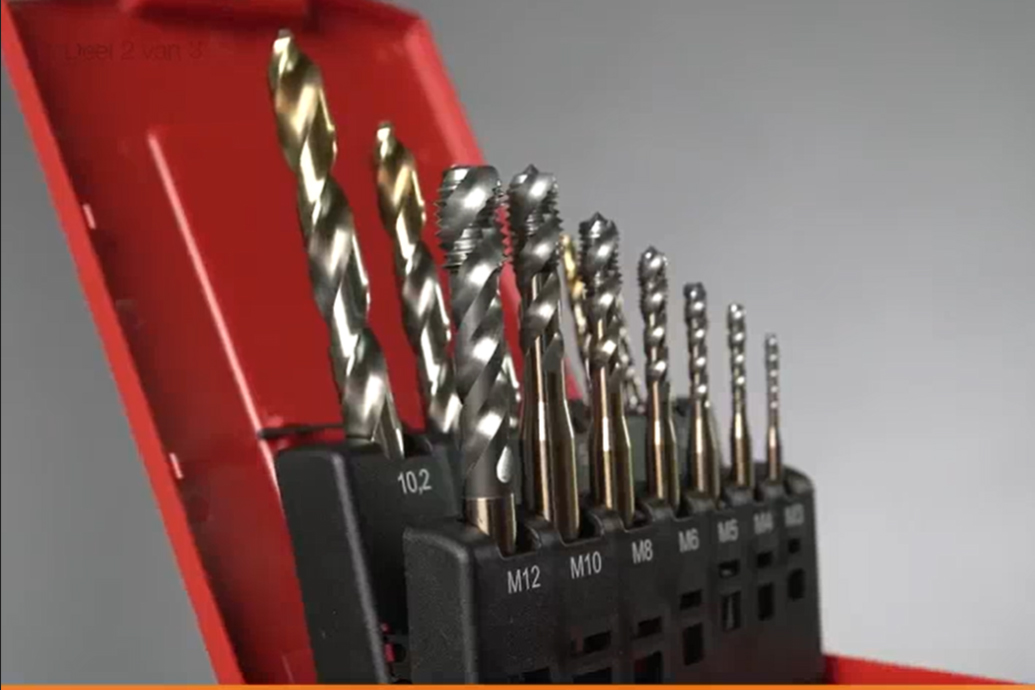Which size should I pre-drill?
When manufacturing an internal thread, it is very important to pre-machine the hole to the correct size. This is often done byA means of a twist drill. For taps and thread mills, the required hole diameter is the same. If the hole is too small, there is a risk of damage to the tap or thread mill. But if the hole is too large, the screw thread will not meet the standard dimensions. Hence the importance of a good choice of this pre-drill diameter. For metric (M) and metric fine threads (MF) there is an easy rule of thumb. Namely, the nominal size of the screw thread must be reduced with the pitch. So with an M6 thread that has a pitch of 1 mm, the pre-drill diameter will be 6-1=5 mm.

This also applies more or less to other thread types such as UNC or G, but it is more difficult to calculate because the pitch is indicated in threads per inch. You will therefore first have to convert it to mm. That is why handy pocket-sized pre-drilling posters and pre-drilling tables are available, on which the correct pre-drilling size can easily be read. The poster is ideal for hanging in the workshop. Please contact us if you are interested in such tables!
When manufacturing threads using a forming tap, larger pre-drilling is required. Those values are also stated on the posters and tables mentioned. You will also always find the pre-drill size stated on the product pages of the relevant taps in the Dormer catalog.

Incidentally, these pre-drilling dimensions are based on the use of a normal twist drill (most standard (N) type HSS-(Co) drills). These have an accuracy of h8. If drills are used for higher productivity (both HSS-(Co) and VHM), which often have a narrower tolerance (h7), it is recommended to choose the pre-drill size 0.1 mm larger. This will enhance the tap life without affecting the desired thread size.
It is also wise to drill 0.1 mm larger if threads are tapped in stainless steels, where the hole can shrink during drilling due to the resilience of the material. It is certainly important in these types of materials to measure the drilled hole to determine whether the hole is large enough.
In practice it can therefore happen that when, for example, a solid carbide drill is pre-drilled in stainless steel , it is allowed to drill 0.2 mm larger.

Table of pre-drilling sizes
